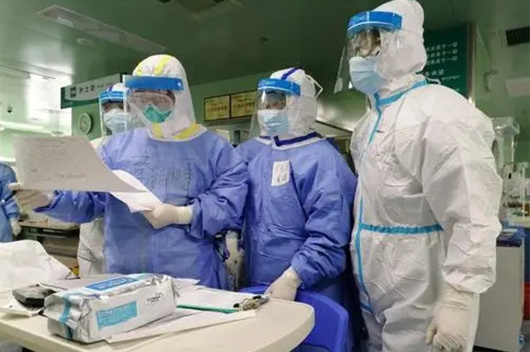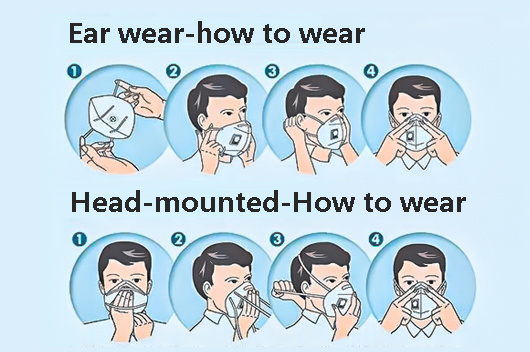How should medical staff do personal protection during the epidemic?
Categories
Sep 18,2021
Summary
How should medical staff perform personal protection during the epidemic? Medical staff are the main force in the prevention and control of the epidemic. In the process of fighting the virus, they need to wear medical surgical masks, medical protective masks, protective glasses or face screens, medical protective clothing, isolation gowns, medical gloves, and disposable waterproof shoe covers. , Waterproof boots.
If you use a full-face gas mask or an electric long-tube respirator, you do not need to wear protective glasses and medical protective masks. In addition, medical staff also need to consciously protect themselves to effectively reduce the risk of medical staff's occupational exposure.

1. Good hand hygiene
Hand hygiene is the main content of standard prevention and one of the most effective methods to prevent the spread of hospital-related pathogens. Among them:
Q1: When should I wash my hands or use hand sanitizers for hand sanitation?
1. Before touching the patient;
2. Before clean and aseptic operations, including before invasive operations;
3. After exposing the patient's body fluid risks, including after contacting the patient's mucosa, blood, body fluids, etc.;
4. After touching the patient;
5. After touching the patient's surrounding environment, including touching the surface of medical-related equipment and utensils around the patient.
Q2: How to properly do hand hygiene?
1. Keep in mind the "six-step hand washing method".
Take: Take an appropriate amount of hand sanitizer on the palm of your hand;
Inside: palms facing each other, fingers close together and rub each other;
Outside: the palms of the hands of the opponents rub each other along the finger joints, exchange;
Clamping: palms facing each other, with both hands crossed and kneading each other;
Bow: bend the fingers to make the joints rotate and rub in the palm of the other hand, exchange;
Large: Hold the thumb of the left hand with the right hand, rotate and knead, exchange;
Stand up: Put the tips of five fingers together on the palm of the other hand and rotate and rub. The exchange proceeds.
2. Quick-drying hand sanitizers are the first choice, and hand sanitizers containing fluorine, ethanol, hydrogen peroxide, etc. are recommended.
2. Wear a mask correctly
Respiratory protection is the core of personal protection! Masks must be confirmed in a safe environment before they can be removed! In addition, you need to pay attention to:
1. Try to wear a mask before entering the indoor space.
2. Do not squeeze the mask with your hands, including N95 masks, can only isolate the virus on the surface of the mask. If you squeeze it by hand, the virus will wet the mask with the droplets, which will give the virus a chance.
3. Make sure that the mask is in good contact with the face as much as possible. After putting on the mask, exhale forcefully so that air cannot leak from the edge of the mask.

Third, do a good job of facial skin protection
As medical staff on the front line of the epidemic, they often wear masks for several hours or even a day. So how can the skin problems caused by wearing a mask for a long time be alleviated?
1. Reduce the pressure on the skin
Make sure that the mask fits properly and the head strap is in place. If you are using an N95 mask, remember not to over tighten the respirator. If possible, remove the respirator regularly in a non-contaminated area.
2. Protect the skin from friction and moisture
Apply a skin protectant to alleviate the impact on the skin or cover the abraded area under the personal protective equipment that does not need to be closely attached to the skin.
3. Avoid affecting the tightness
Do not use thick creams, ointments, petroleum jelly, polyurethane foam dressings or hydrocolloids and other products that may affect the fit and tightness of personal protective equipment. If you use dressings, please choose the thinnest dressing available and execute Fit test.
4. How to choose skin protection products
Does not affect the airtightness of the mask and/or the fit of other facial personal protective equipment; will not fall off the skin and transfer to the facial personal protective equipment; prevent the skin from being rubbed and impregnated (waterproof); good breathability, moisture Does not collect on the skin; does not need to be removed or cleaned; it is not prone to dermatitis.
The above is the introduction of "How do medical staff do personal protection during the epidemic" provided by the editor of Linghe Technology. Doing personal protection can protect yourself and others. For the general population, wearing masks is one of the important means to prevent respiratory infections such as new coronary pneumonia. It is recommended not to use paper, cotton, sponge masks and activated carbon masks. You should choose medical surgical masks and wear medical masks and disposable masks correctly. It is not recommended to reuse it.
Recommended news
